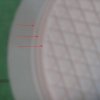davidhk129
Well-Known Member
Printer : Creality Ender 3
Slicer : Cura 4.3
I am having this problem since day one.
If I were to print a platform/base, regardless of shape, circular, square, or rectangular, I would encounter the same problem.
Problem :
The layers are NOT exactly printed over the previous one. After a few layers, the layers always begin shifting to the Right.
So, whatever supposed to be on top of the platform will also get distorted.
That is why I failed to print a base that is designed for Superman. I had to improvise.
Any idea why?
That is the only issue I have with Ender 3.
P.S. This issue happens to Cura 3.4.1, 4.1, and 4.3
See screenshot...……………..

Slicer : Cura 4.3
I am having this problem since day one.
If I were to print a platform/base, regardless of shape, circular, square, or rectangular, I would encounter the same problem.
Problem :
The layers are NOT exactly printed over the previous one. After a few layers, the layers always begin shifting to the Right.
So, whatever supposed to be on top of the platform will also get distorted.
That is why I failed to print a base that is designed for Superman. I had to improvise.
Any idea why?
That is the only issue I have with Ender 3.
P.S. This issue happens to Cura 3.4.1, 4.1, and 4.3
See screenshot...……………..

Last edited:


